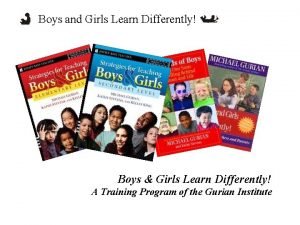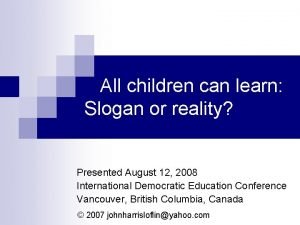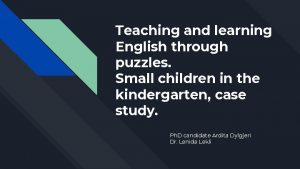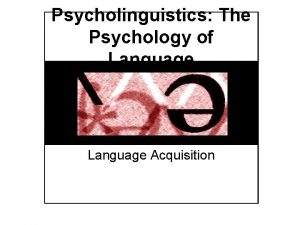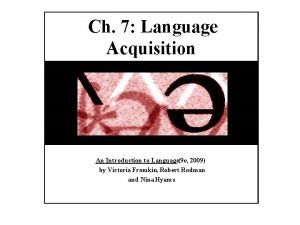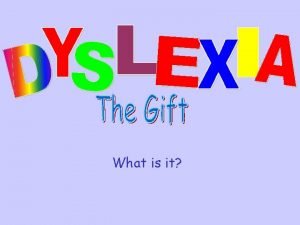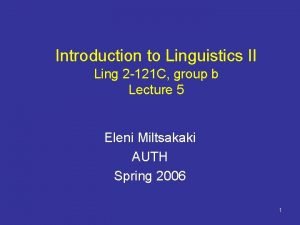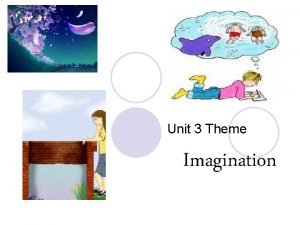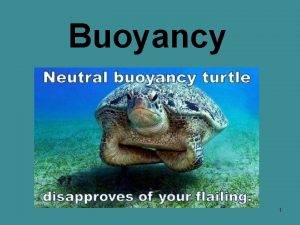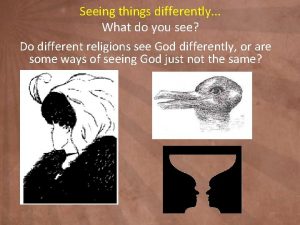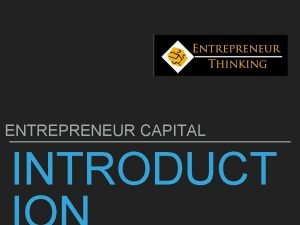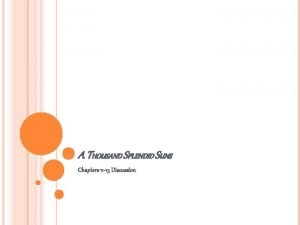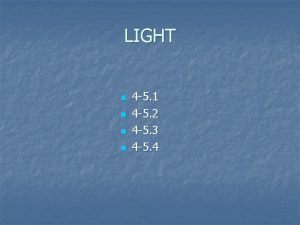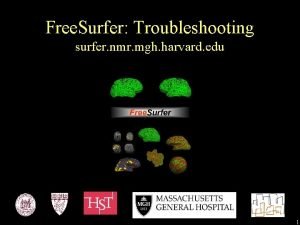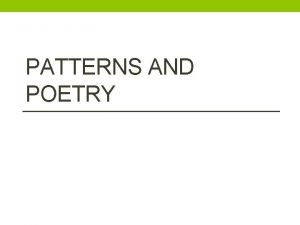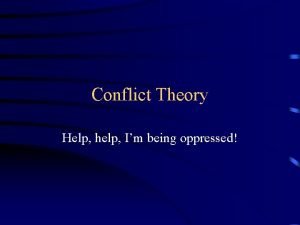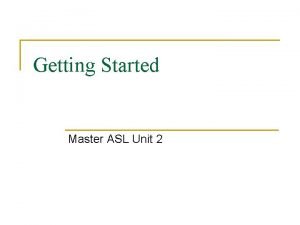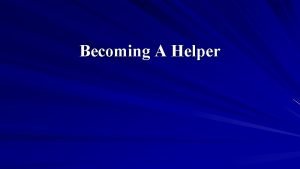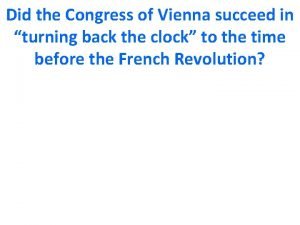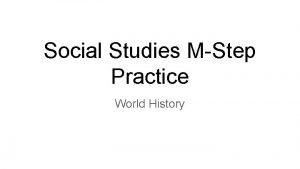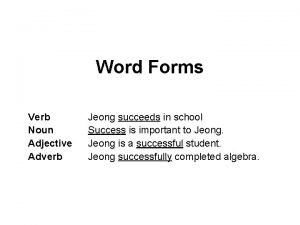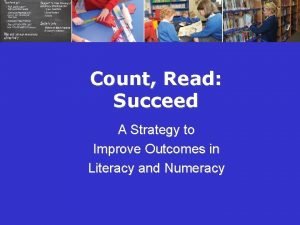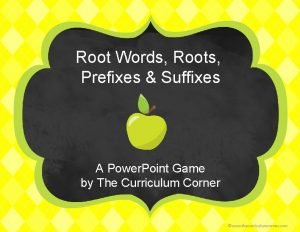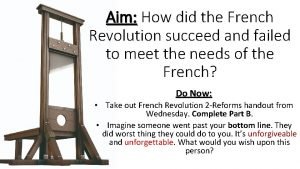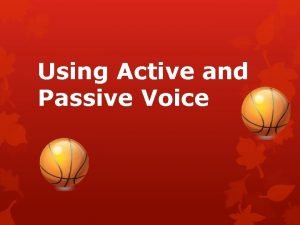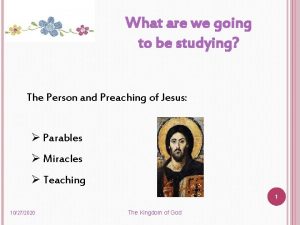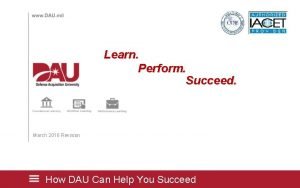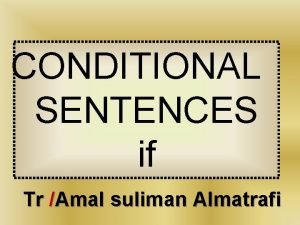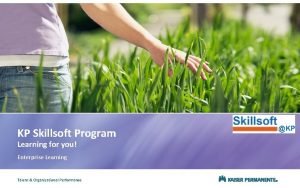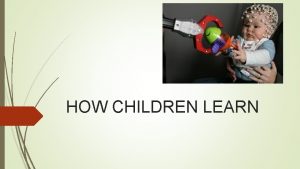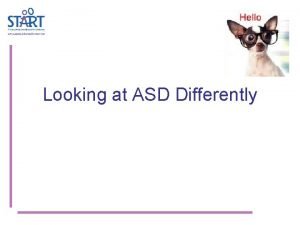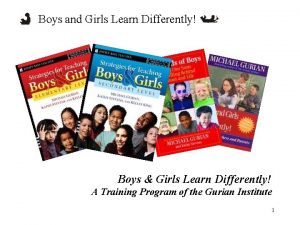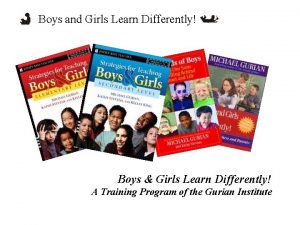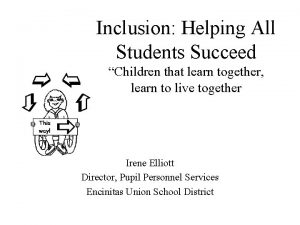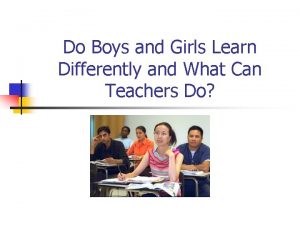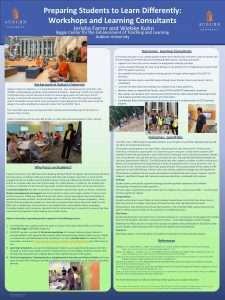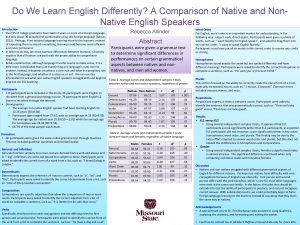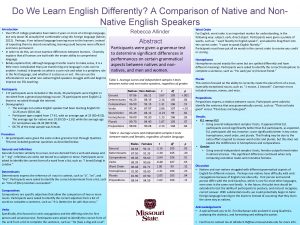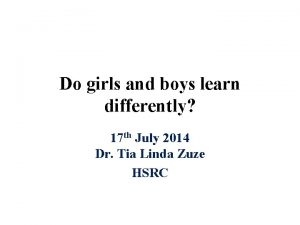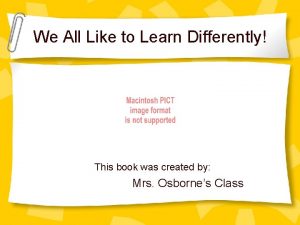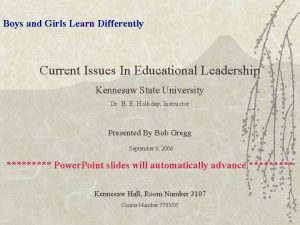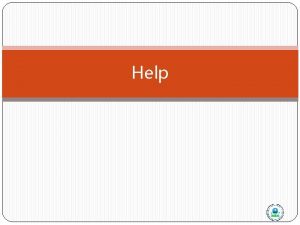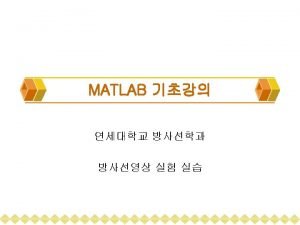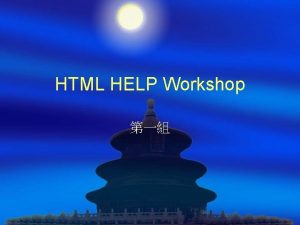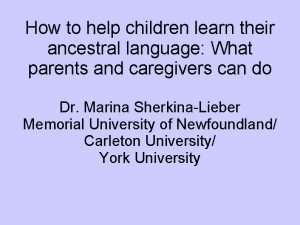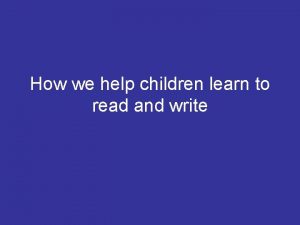How to help children who learn differently succeed









































- Slides: 41

How to help children who learn differently succeed at school: A Neuro-developmental Model of Assessment and Interventions www. lexiconreadingcenter. org 1

Agenda n Housekeeping n Introduction of Rudolf Stockling n Presentation n Discussion www. lexiconreadingcenter. org 2

1. Introduction of Rudolf Stockling EDUCATION / MEMBERSHIP n Bachelor of Arts (B. A. ) UNE Austr. n Dip. in Education (Dip. Ed. ) UNE n Grad. Dip. School Couns. (Western Sydney) n MSc (Psych) Wollongong n Member Australian Psychological Society (APS) n Registered Psychologist NSW Australia www. lexiconreadingcenter. org 3

EXPERIENCE n Secondary Teacher (4 Years) n Educational Psychologist (12 Years) n Psychologist in Private Practice (8 Years) n Director of Assessment Lexicon Reading Centre Dubai (at present) www. lexiconreadingcenter. org 4

Aim of Presentation n n introduce participants to the Neuro-developmental Model of Assessment and Interventions that will measurably improve their children's success in school and life by providing interventions that integrate n n educational, scientific, and clinical expertise. are based on sound evidence www. lexiconreadingcenter. org 5

Objectives of Presentation Participants will be introduced to n n n eight neuro-developmental functions (processes involved in learning) that make up a person’s learning profile indicators of strengths and weaknesses in their children’s neuro-developmental (learning) profile strategies for some of the more common profiles leading to difficulties at school www. lexiconreadingcenter. org 6

Objectives of Presentation (cont. ) Participants will be able to n discuss some individual issues relating to their children n discuss the next steps in supporting their children at home and school www. lexiconreadingcenter. org 7

Introduction “Too many children struggle and fail needlessly simply because the way in which they learn is incompatible with they way they’re being taught. ” Dr Mel Levine www. lexiconreadingcenter. org 8

www. lexiconreadingcenter. org 9

Introduction (cont. ) n n Each student has an unique “neurodevelopmental profile. ” A neuro-developmental profile is a n balance sheet of individual strengths and weaknesses n in the various processes involved in learning www. lexiconreadingcenter. org 10

www. lexiconreadingcenter. org 11

The Neuro-developmental Model of Learning www. lexiconreadingcenter. org 12

Important Elements of the Neuro -developmental Model n n 1. Positive View of Learning Diversity 2. Stress on Individual Learning Profiles: 3. Quest for Specificity and Individuality A Desire to Strengthen the Strengths and Affinities of Children www. lexiconreadingcenter. org 13

www. lexiconreadingcenter. org 14

The Eight Neuro-developmental Constructs (systems) are: 1. 2. 3. 4. 5. 6. 7. 8. The Attention Control System The Spatial Ordering System Temporal-sequential Ordering The Memory System The Language System The Neuro-motor Control System The Social Cognition System The Higher Order Cognition System www. lexiconreadingcenter. org 15

1 Attention: The ability n to concentrate, n to focus on one thing rather than the other, n to finish tasks one begins, n to control what one says and does. www. lexiconreadingcenter. org 16

2 Spatial Ordering: The ability n to distinguish between a circle and a square, n to use images to remember related information, n to visualize steps in a process, n to understand tables, graphs etc. www. lexiconreadingcenter. org 17

3. Temporal-sequential Ordering: The ability n to understand use time and sequence of n events and n pieces of information www. lexiconreadingcenter. org 18

4. Memory: The ability to n to keep information in the mind long enough to perform an operation n to store the transformed information and n to recall that information when needed www. lexiconreadingcenter. org 19

Memory www. lexiconreadingcenter. org 20

5. Language: The ability n to understand articulate language involves many separate kinds of abilities: n awareness of different sounds n pronouncing words n comprehending written symbols n understanding syntax n telling stories. www. lexiconreadingcenter. org 21

Decoding Activity: Recognizing Phonemes When you see Pronounce as q z p b ys a, as in bat e as in pet d or t m b p er e as in pet a, as in bat www. lexiconreadingcenter. org

Passage n We pegin our qrib eq a faziliar blace, a poqy like yours enq zine. Iq conqains a hunqraq qrillion calls qheq work qogaqhys py qasign. Enq wiqhin each one of qhese zany calls, each one qheq hes QNA, Qhe QNA coqe is axecqly qhe saze, a zess-broquceq rasuze. So qhe coqe in each call is iqanqical, a razarkaple puq veliq claiz. Qhis zeans qheq qhe calls are nearly alike, puq noq axecqly qhe saze. Qake, for insqence, qhe calls of qhe inqasqines; qheq qhey're viqal is cysqainly blain. Now qhink apouq qhe way you woulq qhink if qhose calls wyse qhe calls in your prain. www. lexiconreadingcenter. org

n n We begin our trip at a familiar place, a body like yours and mine. It contains a hundred trillion cells that work together by design. And within each one of these many cells, each one that has DNA, The DNA code is exactly the same, a massproduced resume. So the code in each cell is identical, a remarkable but valid claim. This means that the cells are nearly alike, but not exactly the same. Take, for instance, the cells of the intestines; that they're vital is certainly plain. Now think about the way you would think if those cells were the cells in your brain. Excerpt from NOVA Online "Cracking the Code“ http: //www. pbs. org/wgbh/nova/genome/ www. lexiconreadingcenter. org

6. Neuro-motor Functions: The ability to nto coordinate motor or muscle functions nto match brain processes with motor activity www. lexiconreadingcenter. org 25

7. Social Cognition: The ability to succeed in social relationships with peers, parents, and teachers www. lexiconreadingcenter. org 26

8. Higher Order Cognition: The ability to n understand implement the steps necessary to n n n solve problems, attack new areas of learning think creatively. www. lexiconreadingcenter. org 27

The Process of Identification How do we identify a child’s neurodevelopmental strengths and weaknesses to develop a learning profile? www. lexiconreadingcenter. org 28

Step 1: Profile Development Look carefully at each of the functions of the brain that can affect a student’s learning and performance. Involves: n Student n Teacher n Parents n Clinician www. lexiconreadingcenter. org 29

Step 2: Demystification means n providing children (and parents) with the language and insights to understand their strengths and weaknesses n making children part of the solution team n encourage communication between clinician, children, teachers and parents www. lexiconreadingcenter. org 30

Step 3: Interventions by Profile Create an action plan for School / Home It might include n Accommodations n Personalized Instruction n Tutoring n Remediation n Speech Therapy n Occupational Therapy n Counselling, n Medication, www. lexiconreadingcenter. org 31 n

Strategies Bypass Strategies (Accommodations) n n how to work around a weakness One such strategy might allow a student to do extra work in an area of strength, while reducing demands in an area of weakness www. lexiconreadingcenter. org 32

Strategies (cont) n Interventions at the Breakdown Points – (Remediation) I Interventions specifically designed to strengthen an area of weakness. www. lexiconreadingcenter. org 33

Strategies (cont) Strengthening of Strengths – (Tutoring) Strategies that allow children n to keep on using and n improving the parts of their minds n that work especially well for them. n www. lexiconreadingcenter. org 34

Strategies (cont) Affinity Development – (Motivation) This is a process of n helping children discover and deepen their natural interest in particular areas (such as cars, horses, or nature). and n use these interests to increase motivation to attack difficulties n www. lexiconreadingcenter. org 35

Step 4: Follow-Up The child’s profile and plan are reviewed periodically, in order to n monitor progress n refine interventions n make adjustments n re-assess if interventions have limited success www. lexiconreadingcenter. org 36

Assessment and Intervention Process 1. Data Gathering n n n Teacher observation (questionnaires) Parent observation (questionnaires) Clinician’s Testing data 2. Data Consolidation n Evaluation Report 3. Intervention Plan n Case Conference 4. Demystification § Discussion with student www. lexiconreadingcenter. org 37

Assessment and Intervention Process (cont. ) 5. Implementation n n interventions are implemented accommodations are implemented 6. Follow-Up n n student progress is assessed accommodations/interventions are adapted www. lexiconreadingcenter. org 38

References n n n Levine Mel (2003): The Myth of Laziness. New York: Simon and Schuster Fletcher, J. M. , Lyon, G. R. , Fuchs, L. S. , & Barnes, M. A. (2007). Learning disabilities: From identification to intervention. New York: Guilford Sattler J(2006): Assessment Of Children: Behavioral, Social, And Clinical Foundations Fifth Edition. La Mesa: Sattler Publications www. lexiconreadingcenter. org 39

Resources for Parents n n Professional Organizations American Academy of Child and Adolescent Psychiatry: http: //www. aacap. org/ Provides information fact sheets for parents and caregivers, current research etc. American Academy of Pediatrics: http: //www. aap. org/ Contains general information for parents of children from birth through age 21. American Psychological Association: http: //www. apa. org/ The scientific and professional organization of psychologists in the United States. Websites n n All Kinds of Minds: http: //www. allkindsofminds. org/ Provides resources to help parents, educators, and clinicians Learning Disabilities Association of America: http: //ldaamerica. org/ Provides a wealth of information on understanding learning disabilities National Center for Learning Disabilities: http: //www. ncld. org/ An online guide to l information about learning, early literacy and learning resources, www. lexiconreadingcenter. org 40

Thanks www. lexiconreadingcenter. org 41
 Boys and girls brains
Boys and girls brains Learn to learn
Learn to learn All children can learn slogan
All children can learn slogan Children tend to learn english
Children tend to learn english Do children learn through correction and reinforcement
Do children learn through correction and reinforcement Do children learn through structured input?
Do children learn through structured input? Everyone learns differently
Everyone learns differently Choose the word which is stressed differently from the rest
Choose the word which is stressed differently from the rest C 2 =121
C 2 =121 Through the eyes of imagination
Through the eyes of imagination Words that are spelled the same but pronounced differently
Words that are spelled the same but pronounced differently Why water behaves differently
Why water behaves differently Seeing things differently images
Seeing things differently images We all think differently
We all think differently Is brightness a property of light
Is brightness a property of light Chapter 15 a thousand splendid suns
Chapter 15 a thousand splendid suns Npv vs irr graph
Npv vs irr graph Translucent material
Translucent material Self help and community help is the motto of
Self help and community help is the motto of Freesurfer troubleshooting
Freesurfer troubleshooting Help us help you
Help us help you River
River Question maker face asl
Question maker face asl Becoming a helper 7th edition
Becoming a helper 7th edition What was the congress of vienna? *
What was the congress of vienna? * Three world order
Three world order Succeed noun adjective adverb
Succeed noun adjective adverb Count read succeed
Count read succeed Succeed prefix and suffix
Succeed prefix and suffix Did french revolution succeed
Did french revolution succeed Vivek joglekar
Vivek joglekar Why did roanoke fail and jamestown succeed
Why did roanoke fail and jamestown succeed My reason for joining extension work activities
My reason for joining extension work activities Would you rather learn english or french passive voice
Would you rather learn english or french passive voice Lessons from ants
Lessons from ants What are we going to learn
What are we going to learn You obey the advice of your teacher
You obey the advice of your teacher Sanskrit from home
Sanskrit from home Learn.dau.mil
Learn.dau.mil Amal suliman
Amal suliman Kplearn
Kplearn How is technology changing the way we learn
How is technology changing the way we learn
